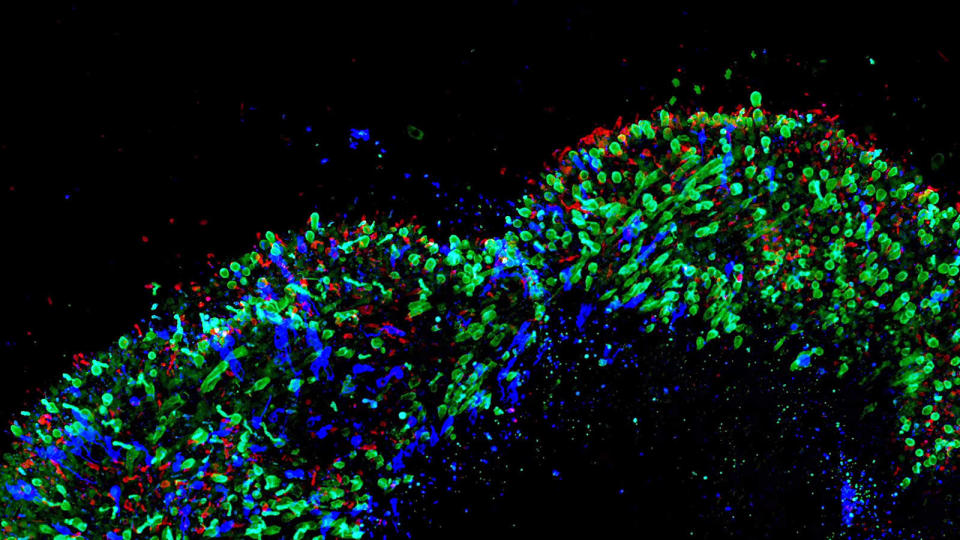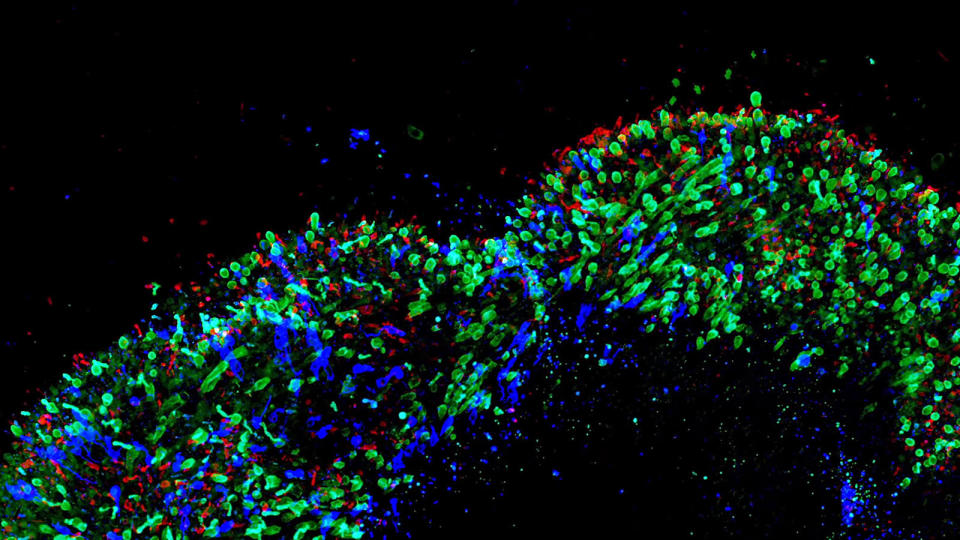Lab-grown eyes explain how a baby's vision develops in the womb
CRISPR manipulation proves why pre-term babies are often color-blind.
Researchers at John Hopkins have grown artificial eye parts to better understand how we develop color vision. Though they don't look like eyeballs, the "organoid" retinas built from stem cells grow in much the same way as our own orbs. By using CRISPR to manipulate thyroid hormone levels, they shut off growth of green- and red-detecting cells. The results could provide new insight into how we develop color vision and help doctors treat blindness in the future.
It's hard to study color vision directly because of the challenge obtaining live tissue samples from people's eyeballs. A new and less painful way to do that is with organoids, which are functional lab-grown parts of an organ built directly from stem cells. "Everything we examine looks like a normal developing eye, just growing in a dish," said John Hopkins development biologist Robert Johnston. "You have a model system that you can manipulate without studying humans directly."
The team first grew organoids with regular trichromatic (color) vision to use as a baseline. They noticed that blue-sensing cells developed first, followed by red and green cells. They wondered, then, what caused them to gain different color sensitivity? "Trichromatic color vision delineates us from most other mammals," said grad student and lead author Kiara Eldred. "Our research is really trying to figure out what pathways these cells take to give us that special color vision."
Researchers have long suspected that thyroid hormone affects the development of red-, green- and blue-detecting cones in the retina. Using CRISPR, the John Hopkins researchers disabled thyroid hormone receptors for some organoids, which then only grew blue-sensing cells. For others, they flooded them with the hormones before the blue receptors formed, and all the cells developed only as red and green.
The findings confirm theories about how color vision development is affected in the womb and why pre-term babies, who don't get as much thyroid hormone, have higher rates of vision disorders. 'If we can answer what leads a cell to its terminal fate, we are closer to being able to restore color vision for people who have damaged photoreceptors," said Eldred. In the future, the team wants to study the macula, with the aim of developing clinical treatments for macular degeneration, one of the leading causes of blindness in people.


